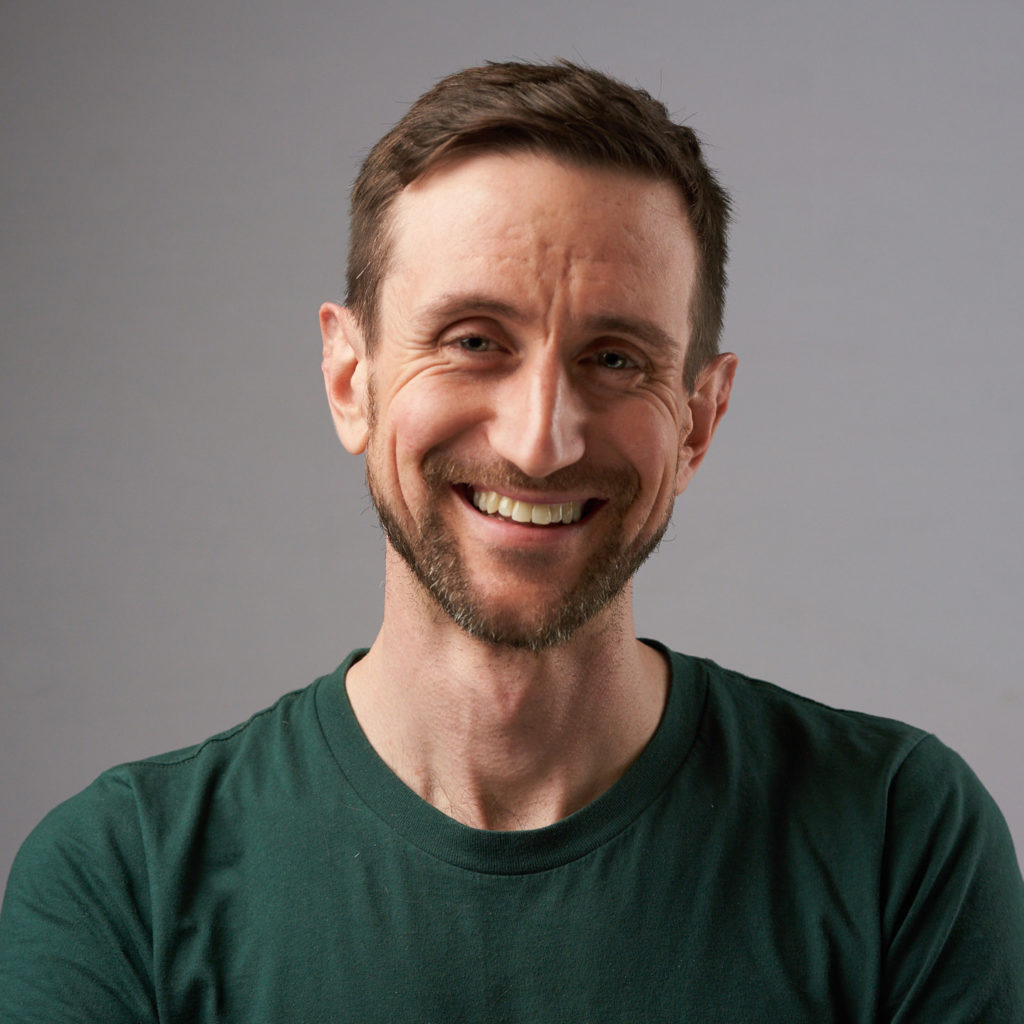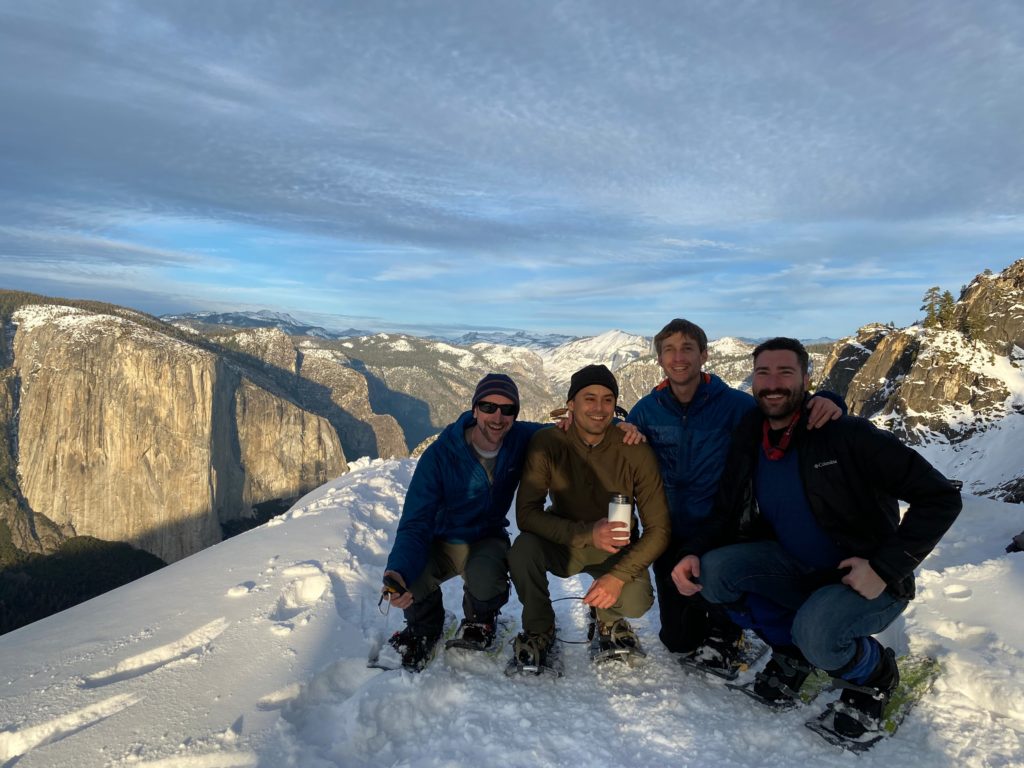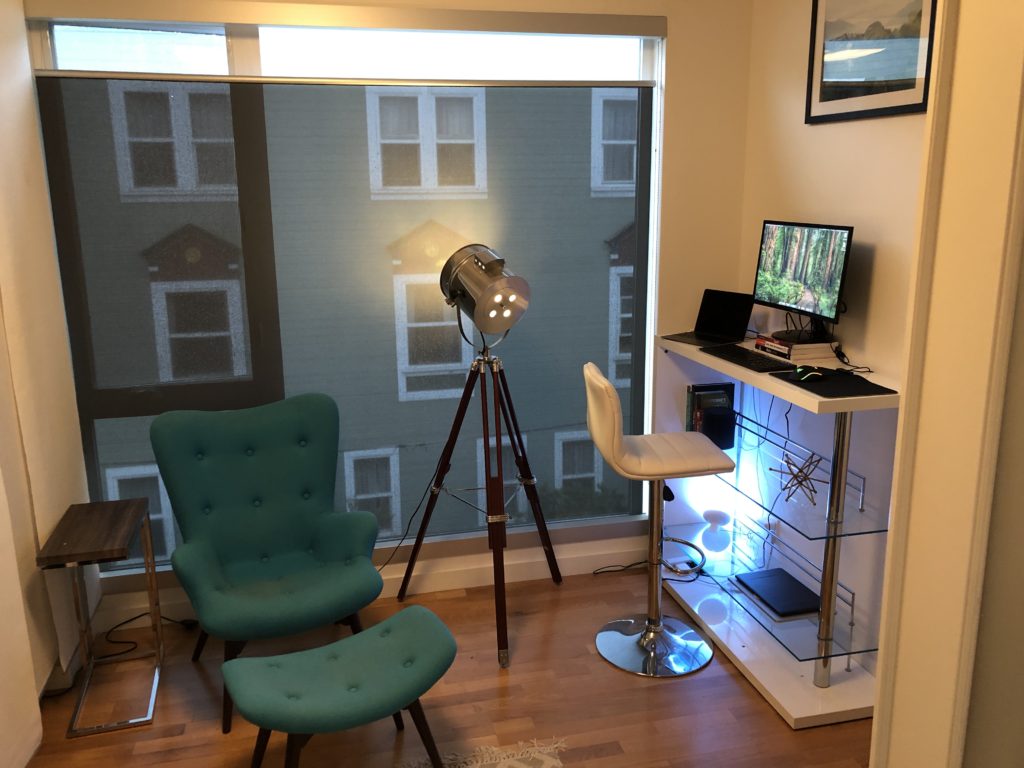Morgan Linton is the first face I saw in the domain industry, when watching his 5 part video series called Domaining Power Course (published by a young Morgan 11 years ago!). Yet, I only met Morgan in person last year in Lisbon in occasion of NamesCon Europe. We hit it off right away, and it is easy to understand why – Morgan is personable, well-traveled and with a lot of great stories.
Morgan’s career has been an amazing journey. Born and raised in Berkeley, California, he is one of the early employees of Sonos, then graduating to shareholder. While still working for Sonos, he got the domain bug, and his blog became one of the most popular in the industry. In recent years, Morgan has continued to blog about domains from the sidelines, since he co-founded BoldMetrics, a VC funded startup based in San Francisco (backed by Mark Cuban and other smart investors) which he calls the “API for the Human Body”. Just prior to this interview’s publication, Bold Metrics launched ContactlessFit, an exciting new technology aimed at solving one of the issues that retail stores will face in the post-Covid world.
Morgan is also a speaker (check his TedX speech in Rome) and a super fit athlete: we squeezed a tennis game in Lisbon before his flight and, man, he can run! Please enjoy this wide-ranging interview with Morgan Linton:

Where do you live and why?
I live in San Francisco but we love moving around and living in different places. I’m originally from the Bay Area and, as the founder of a software company, it is great being here – the city has great energy with so many people building interesting things and collaborating together. I also love hiking and camping and we have amazing access to nature. Whether it’s enjoying Golden Gate park in the city, heading out to Mt. Tam, or doing an adventure out to Yosemite, it’s hard to miss all the natural beauty here.
That being said, since we do move around, don’t be surprised if you see us move somewhere else. We’ve always planned on living in Asia and there’s a good chance we’ll make the move sometime over the next few years.

How did you get involved with domain names?
When I was a kid, I wanted to be a veterinarian. Then I became interested in space exploration, and astronaut moved to the top of the list. However, once I got my first computer, that changed everything. I knew that doing something creative on a computer would be at the core of my life.
I got involved with domain names back in 2004 when I was working for a small music startup called Sonos. It was the first time in my life I was getting a meaningful paycheck and I found myself with a fair amount of money left. I asked a few people for advice and everyone suggested putting it into stocks and mutual funds. That all sounded too “normal and boring” to me at the time – I felt like anyone could do that. I wanted to do something interesting and unique.

I actually searched on Google: “how to make money online.” I discovered a blog about domain investing called Conceptualist.com, written by a guy named Sahar. I was instantly hooked. I think I must have read just about every post on his blog over the next week. Then I discovered DNJournal, looked at the sales list and thought, okay – this is interesting!
I took almost every penny in my bank account, which at the time was maybe $25,000 (a lot for me in my early twenties!), and put it all into domain names. I bought .MOBI domains, .US domains, I went nuts! That famous domain buying spree that new investors do – I did it big time.
When I told my friends and family what I did, they thought I was crazy. I was sure I would prove them wrong. A few months passed: no sales and none of my parked domains was making any money. As more time passed, I started to become concerned – what had I done?
The breakthrough came when I sold my first domain name. It was an incredible feeling! Until then it didn’t feel real – other people sold domains, I just owned a bunch of domains nobody wanted to buy. But after that first sale, I had the domain bug!
How has the domain market changed since you started in the industry? Do you think it is easier or harder for someone to start out? Where do you feel the industry is headed?
The domain market has changed in a few key ways since I started. The biggest fundamental change is the shift away from domain parking. When I started in the domain industry, I met a lot of people who made a meaningful chunk of their income through domain parking. Today, I know almost nobody who does.
Parking revenue really fell off a cliff starting in 2007. Since then we’ve all watched parking company after parking company fold or get acquired. While parking is certainly not dead, it isn’t even close to what it used to be.

Another major change is the other extensions beyond .COM/.NET/.ORG becoming real investment options. I know people who have done very well with extensions like .CO and .IO and I think extensions like .AI and .ML have an exciting road ahead of them, given the adoption we are seeing today. While everyone thought new gTLDs would be a game-changer, what we’re seeing is that ccTLDs actually won the day, although they are often used like a new gTLD, since most people have no idea which country .AI [Anguilla] or .IO [British Indian Ocean Territory] are related to.
What has always been a constant in the industry is .COMs and the investment force of one and two-word .COM domains. When I first started, two-word .COMs were what people recommended I invest in. Today, it’s still my investment focus, and the same people who recommended it to me then are just as bullish today.
I think it’s easier for people to start investing in domain names today than it was thirteen years ago when I started. With resources like DNAcademy and DomainSherpa and a much larger and broader community of investors sharing what they’re doing on forums, social media, etc. I do think there are more places for new investors to learn than there have ever been.
What has always been a constant in the industry is .COMs and the investment force of one and two-word .COM domains.
As for where the industry is headed, phew – well that’s a tough one to answer. I could definitely write a whole article about it. That being said, I will share 3 general changes I think we’re going to see over the next 5 – 10 years:
– COM will continue to be king. I think most smart investors will keep their focus on one and two-word .COMs.
– Extensions like .IO and .AI will continue to flourish in the startup space. Less well-explored spaces like .ML and .VC will likely see growth as well. We will continue to see these ccTLDs experience solid growth both in use and sale prices.
– More places to sell to other domain investors will crop up. We’re already seeing this happen with LMX, NameLiquidate and DNWE. I think this concept is really going to take off over time, as more people become domain investors and want to find a way to get more liquidity.

What do you feel is the most common mistake beginner domain investors do?
The famous domain name buying spree. Most beginners start out by hand-registering a bunch of domains before they know what they’re doing. While they might get lucky with one or two, they often find they’re spending a lot of time buying domains they’re never going to sell. Then, they get attached to these names and keep renewing them.
The problem is, many people see a list of recent domain sales and think that similar domains will sell quickly and easily. What they often don’t realize is that every domain name is different and while you might “think” you’re buying a domain that’s pretty much the same as one that sold for $25,000, you might be buying a name that’s not even worth $25.
The only way for new investors to know they are buying the right names is to focus on education first. From courses like DNAcademy, to forums like NamePros and shows like DomainSherpa, learn first, buy later, and avoid the famous domain name buying spree.
If you had to gift $10,000 to your kids and guide them to invest in domain names, what would you tell them to do?
I would probably tell them to buy 4 – 6 two-word .COMs, put a for sale landing page up using a service like Efty, and field inbound offers over time to hopefully turn that $10,000 into $100,000. Of course, the key to this would be connecting with a seasoned domain investor who can help them pick these names and make sure they’re actually investing in real assets.
Many people see a list of recent domain sales and think that similar domains will sell quickly and easily. What they often don’t realize is that every domain name is different and while you might “think” you’re buying a domain that’s pretty much the same as one that sold for $25,000, you might be buying a name that’s not even worth $25.

Who are the people you respect the most in the domain industry?
We are incredibly lucky to be in an industry with so many brilliant and talented people. Which also makes this an incredibly challenging question to answer! I think the best way to answer is to break it down by category.
When it comes to domain name investors – people who make money buying and selling domain names – the three people I have looked up to the most over the years are Rick Schwartz, Frank Schilling and Michael Berkens. All three of these investors have taken a different approach and, as I’ve learned more about how they’ve built their businesses, I’ve been equally impressed with all three. Every time I talk to Rick, Frank or Mike, I learn something new and, at the same time, gain a greater appreciation for who they are as people outside of the domain world. They have always been very helpful and supportive of myself and many other people in the industry. I have some really fun memories with each of these guys: from having breakfast with Rick at my first TRAFFIC show, to rocking out to some Reggae in the park with Mike and Judy in Asheville, to enjoying Vegas clubbing adventures with Frank.

I think another category of people are just crazy good business-people who have crossed over in the domain name world. Some might call these folks serial entrepreneurs, as they have made money buying and selling domains, but they have also become millionaires doing other things, some related to domains, others unrelated. The people that really stand out here are Braden Pollock, Ammar Kubba, Richard Lau, James Morfopoulos, Merlin Kauffman, Gregg McNair and Bill Kara. All of these people have been a major inspiration from me – I consider all of them good friends, heck – some were at our wedding! Since I’ve gotten to know each of them well over the years, I could write a whole blog post about each, but I’ll leave it at this for now. Suffice it to say, all of them are amazing people and I learn a lot from them every time we get together or chat on the phone.
The last category of people that have inspired me are the journalists and people in the domain name world who made the community it is today. Ron Jackson [check out our exclusive interview] is at the top of the list here. Along with being one of the nicest people I’ve ever met in my life, Ron is one of the most incredible journalists I’ve ever met – a constant inspiration. Andrew Allemann and Elliot Silver are the next two on my list, also two of the nicest people I’ve ever met and incredibly talented writers. I am honored to be blogging alongside such high caliber people.
Throughout these years working at Sonos and Bold Metrics, who is the person you have met who has inspired you the most?
Phew, that’s another tough one. At Sonos I was most inspired by John MacFarlane. John is an incredible visionary but also one of the most humble people I have ever met. Some founders set a very high bar and they’re also incredibly transparent about whether they are living up to their own expectations. John always felt like he could do better and had a hard time taking credit for things himself – he always talked about what the team did and really put his focus on finding and inspiring great people.
Sonos became what it is today because of its people, and John did an incredible job of creating a company that challenged the status quo by doing something completely new. That, coupled with a focus on the team accomplishing goals together, makes John a major inspiration in my life.
At Bold Metrics, I’ve been very inspired by one of our investors, Brett Hurt. Brett started a company called CoreMetrics that he sold to IBM, then he started BazaarVoice which he took public. Now he’s running an amazing company – data.world. What has inspired me about Brett is similar: Brett is also all about the people, and really instilled in us early-on the importance of finding great people. It can be easy to look for people based purely on skills or degrees, but Brett really challenged us to think about people’s personality and attitude, and their ability to work with others and be a part of our journey. It has been incredible to watch Brett start his next company and see the master at work. Brett is one of the most inspiring founders out there and I’m so proud to have him as one of our investors.
In fact, the biggest lesson I’ve learned in our eight years running Bold Metrics is that it’s all about the people. There are a lot of talented people out there, the key is finding people that also have a good attitude, are excited about what they’re doing, and love to work together as a team.
The biggest lesson I’ve learned in our eight years running Bold Metrics is, it’s all about the people. There are a lot of talented people out there, the key is finding talented people that also have a good attitude, are excited about what they’re doing, and love to work together as a team

How does your average day look like?
I’m a very focused person and, while my days are intense, they general have one singular focus – Bold Metrics. That being said, I do like to start and end my days with something creative that’s not work related. Usually in the morning I get up around 7am, study Japanese, eat breakfast, read the Wall Street Journal (have been reading this every morning for a LONG time now) and ease into my day. From 8:30am until 6:30pm I’m working on Bold Metrics. If I’m traveling, I often have a break for an hour or so, then I will usually be at dinner with clients, investors, etc. During my day I chisel out about 20 – 30 minutes to write a blog post. I’ve been writing my blog for thirteen years now which is my other creative practice. It’s not easy to write a post every day but my readers are the best and, as long as they keep reading, I’ll keep writing!
I don’t watch a lot of TV so, unlike so many people, I usually don’t end my day by watching a series on Netflix or HBO. Instead we usually have dinner and then I’ll either study more Japanese or play some video games. I’ve been a gamer for a long time and absolutely love both watching and playing video games. While I don’t get the chance to play every day, if I can, I try to infuse a little gaming session into my day.

What is your favorite non-industry related book(s), blog(s) and app(s)?
Every morning I read the Wall Street Journal. Recently I’ve been reading The Information daily and I really enjoy it – they have great writers and cover stories you can’t find anywhere else. I also read Techcrunch daily and the VC blogs of Hunter Walk, Brad Feld, and Mark Suster.
As a founder, I’m always trying to understand the global markets and the impact on our business, along with what other startups and VCs are doing. That being said, I read most of these things before we started Bold Metrics, so these are all topics I’m generally interested in.
How can people find you?
MorganLinton.com is my blog, @morganlinton is my Twitter handle – those are the two places I’m the most active publicly.
Any parting notes or comments?
It’s an honor to be interviewed by you Giuseppe, and it’s been so great to watch your journey in the domain industry. I think my only parting comment would be, stop playing tennis so much so next time I come to Portugal I at least have a fighting chance! 🙂

2 responses to “Industry Interviews – Morgan Linton (Bold Metrics)”
another GREAT read… thanks for sharing guys!
Having a short domain does look like it could be handy